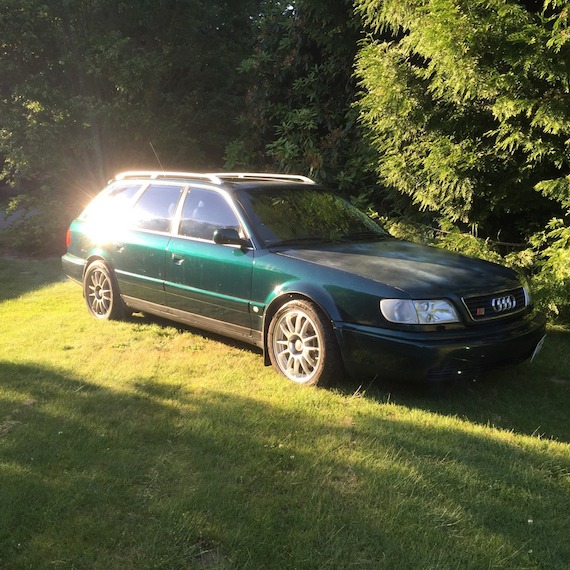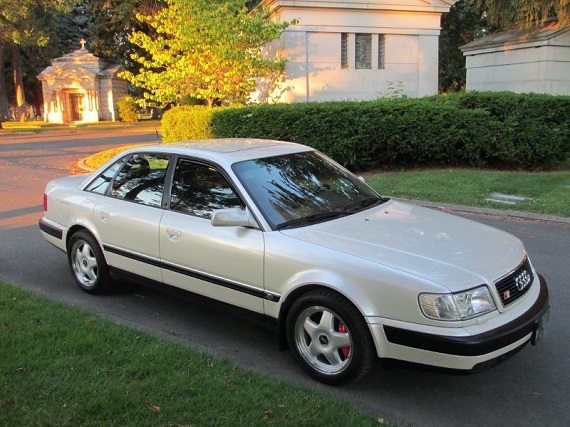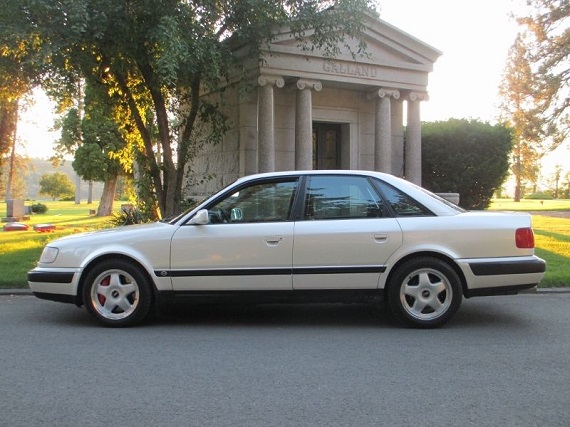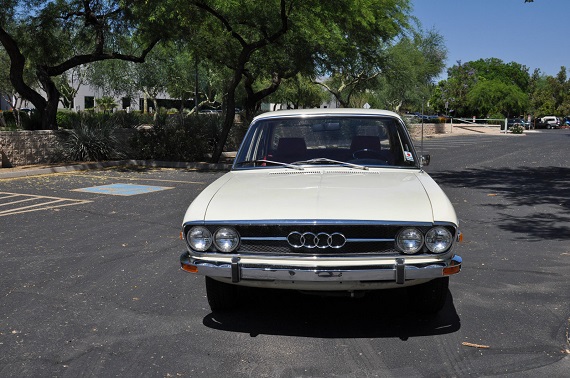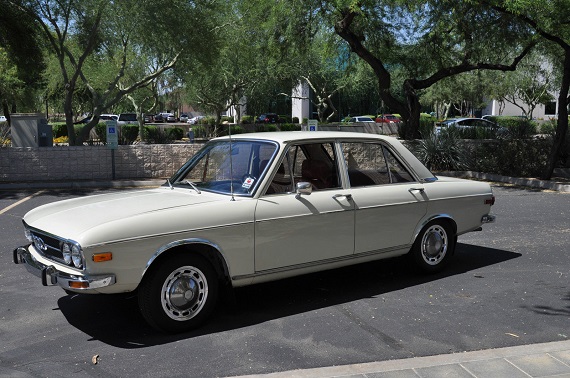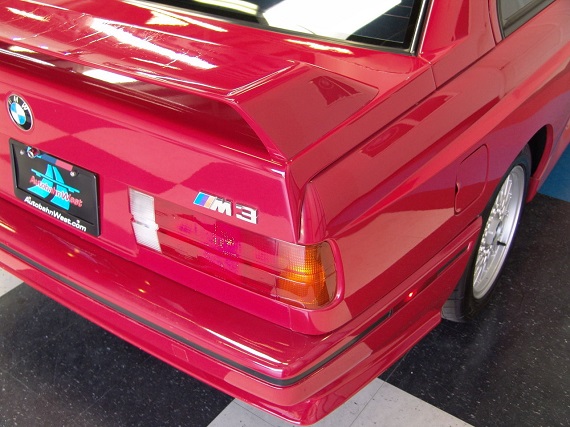In yesterday’s S4 post, I covered many of the special items that made the ’92 model unique for the U.S. market; in fact, I said that in many ways it was the most highly sought of the C4 models. Well, that probably was a bit of overstatement in at least one regard, because while it may be true for sedans for many the Avant model from 1995 was much more special. 1994 to 1995 saw some major changes for the C4; the most obvious being the model designation change from S4 (1991-1994) to S6 (1995-1997). European models had some additional drivetrain options that weren’t available in the U.S., and indeed the Avant had previously been available in S4 form, but the 2.2 liter turbocharged inline-5 carried over largely unchanged into 1995. The big news was the addition of the Avant to the U.S. lineup; at the time, as expensive as an Audi got here. There was also the obvious external refresh; smooth body-colored bumpers and wider side trims eliminated the rubberized black moldings. The hood and lights were lightly re-sculpted too, along with the change (rolling, for some models) from the Fuchs-made 5-spoke alloys to the Speedline-made 6-spoke Avus wheels which would be the signature S-wheel for the next decade. Gone were two staples of the Audi lineup from the 1980s – Procon 10, the seatbelt pre-tensioning safety system Audi highly marketed in the late 1990s disappeared with little fanfare, but also, perhaps more strikingly, S cars would no longer be branded with “quattro” badges – a change that would carry on nearly until today’s models, where models like the RS7 re-introduced it in the grill. Inside minor changes were introduced; a revised dashboard, shift knob, along with the introduction of the most notable change (once again, rolling) to a 3-spoke sport steering wheel. It was a tremendous amount of minor changes that in sum resulted in a slightly different feel for the S6; slightly more polished and grown up, carrying the new design language for Audi that would remain for the next decade. Audi wasn’t done, though, because in “1995.5” Audi once again changed several items on the then-still-new S6. This included a major change moving forward – the elimination of driver control of the rear differential, a hallmark of Audis since the introduction of the original Quattro. Audi opted for an “electronic differential lock”, which in reality was a system which utilized the ABS system to detect wheelspin and apply the brakes. This major change resulted in some minor interior tweaks, such as moving the cigarette lighter, and there were additional revisions to the radio. The transmission’s traditional weak first gear was also addressed, as well as adding infrared locking and some other minor trim changes. All of these changes – some of them running changes – give the limited production S6s, and especially the Avants, a bit of a bespoke feel. With numbers produced only in the hundreds, these are special and coveted cars that are very capable – and highly sought:
Category: Audi
There are some car listings that just make me sad, and this S8 is one of them. I fear that I may be missing the bus on getting just the right S8, because while the prices continue the gentle depreciation slide they’ve been on over the past decade, that means that they’re ending up in less-than-careful hands. In many of the cars I’ve owned, I’ve wished that I was maybe one or two owners closer to the original sale, because I’ve spent so much effort trying to undo what the previous owner did or repair things they left undone. A simple oil leak can easily turn into a multi-thousand dollar repair in some cases if left unattended, and when you’re talking about an expensive, complicated car like the S8, there can be multitudes of possibilities for where you can run into trouble. But even excusing that mechanicals on a 12 year old car get old and need to be replaced, then there’s the physical wear – generally, the second and third owners of cars seem to care much less for their condition than the original owners did. Let’s take a look at the cost of ownership on this 2003 S8, and why I’m sad:
CLICK FOR DETAILS: 2003 Audi S8 on eBay
7 CommentsI’m going to say something that’s probably somewhat shocking to many Audi faithful; the original Audi 100 was actually a sales success. Audi produced nearly a million of its new-style sedan, taking the company of a trajectory of innovative and aerodynamic family cars throughout the 1970s and 1980s. Of course, you’ll say, even if the C1 was a success in Europe, it wasn’t so much here in the U.S., right? After all, you see very close to zero of these handsome 1970s designs kicking around today. That would be a misstatement of the truth, since Audi original sold an astonishing 146,583 Audi 100s here. But since Toyota sells that many Camrys every hour, let’s put that into perspective. Some really rare Audis in the U.S.? How about a few of my favorites – 22,356 Coupe GTs sold here in total, and only 3868 V8 quattros made it to the States. Okay, neither the Coupe GT nor the V8 quattro was a particularly popular model for various reasons. How about a wildly popular model, then? Audi’s sales success with the 100 was on par with the company’s more recent star model, the A4 – Audi shifted 98,393 95-99 A4 models, and those are pretty common to see even if the newest of the B5 generation is 14 years old. A bigger perspective? Audi sold more 100LSs than it sold total cars (135598 total) between 1988-1995. I remember the 1980s, and even then – when these cars were newer than the current B5 generation – you just didn’t see them. That makes it especially neat to see one today, especially in the condition of today’s example:
CLICK FOR DETAILS: 1972 Audi 100LS on eBay
4 CommentsThis one has been brewing in my head for some time, and required only two things; the right two cars. I think, in this case thanks to the help of our reader Martin, I might just have the right two candidates. While BMW enthusiasts love to tout the virtue of the boxflared M3, they often overlook the importance of the Quattro. The chunky, Giugiaro-designed Audi made it to the market with its bulging quarters a full 5 years ahead of the M3, yet the DTM star is arguably much better known than the all-wheel drive Rally champion. Both were certainly important to the development of their respective corporate brands; both have illustrious careers as race cars and both are considered by connoisseurs to be the best design of those that followed. Quietly, while the market-star M3 has soaked up the headlines, good condition Quattros have also been appreciating, and with far fewer of them produced than M3s they’re a more rare sight today. They’re also, generally, much older and fewer were taken care of in the way that the M3s were pampered. Add little factory support and an even worse balance of the number imported to North America – only around 10% of the total of North American bound M3s – and it’s a hard match up. Yet, today we have two overall great condition cars to consider. Who wins the boxing match? Let’s start with the odds-on favorite M3:
